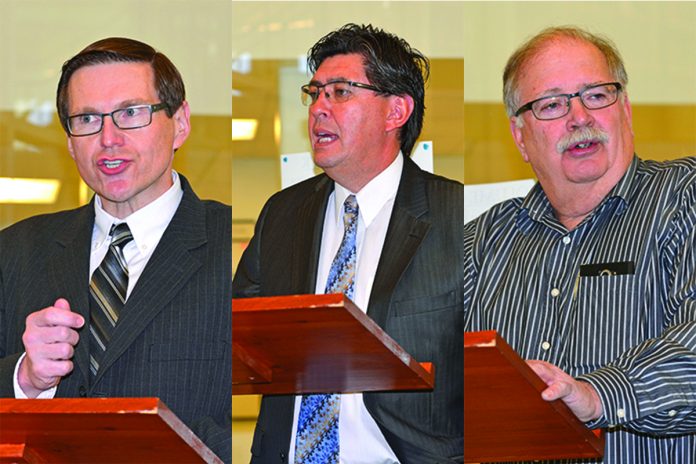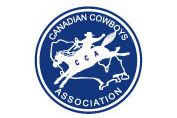
With a looming deadline of January 23 to provide feedback on the Dan Perrins K-12 Educational Governance Review Report, the Chinook Board of Education is calling on concerned individuals to quickly voice their opposition to the proposed changes.
Chinook board trustees and administration held a press conference on Tuesday morning to highlight a series of concerns surrounding the potential impacts of another forced amalgamation of school divisions in Saskatchewan. During the last amalgamation on January 1, 2006, nine former school boards amalgamated into Chinook, and local officials estimate that amalgamation process had a five year long negative impact on students.
“The changes of amalgamation 10 years ago brought such disorientation to the system, that our belief is it impacted students negatively for about five years, until educators, the board and students could acclimate to a new system,” Chinook Board vice chair Dr. Shane Andrus said.
“It was systemic shock across the province,” Chinook Director of Education Liam Choo Foo recalled. “People were focussed on operational matters, and trying to keep things up and running.”
The recently released 34 page Perrins Report delved into the question of what system of governance and administration is needed in Saskatchewan’s K-12 education sector.
His report outlined four options:
1. Provincial Model. Consolidate the 18 existing public board of education not a single board overseeing all 606 public schools in Saskatchewan. The board would hire a CEO to manage both the education and business functions. Four to six regional service areas would be established to support the board, potentially aligning with health services boundaries.
2. Regional Model. Establish four regional public boards. Each of the four boards would represent a geographic area in delivering their services.
3. Division Model – Restructuring Public School Divisions. Review the current school division boundaries which were established a decade ago to respond to changing demographics, changes to legislation and taxation. Create boundaries for between eight and 14 public school divisions with a balanced number of students. Would also need to create an entity to drive sector-wide operational efficiencies.
4. Division Model – Realigning Boundaries. Implement boundary changes where realignment will support local community needs and interests. This model would also required the creation of an entity to drive sector-wide operational efficiencies.
In light of these options, Chinook is taking the united stance that they would rather focus on ideas that strengthen and improve their current governance rather than dismantling the entire system.
“In the report the status quo’s not on, so we’re definitely concerned that there will be some change to the system. Exactly what it is we’re not sure, and that’s why I think local voice speaking to the government is an important piece,” Choo Foo said.
The last set of amalgamations closed 176 schools across the province, and there is a concern in Chinook regarding new closures in light of centralizations outlined in any of the Perrins Report options.
“When you read the paper the first thing you’ll notice is that closures are not listed, but then again we go back to the history you see why we are worried about it,” Board chair Caswell said.
“One of the reason closures are not more common place is that the trustee system we have, has the communities at risk represented by somebody who is responsible to them. Once you go, especially to appointed boards, or very long distances between communities, you lose a lot of that personal knowledge, community knowledge. And it’s a lot easier to shut down something you don’t know a soul there, you don’t know anything about it, but you have a mathematical formula to follow.”
Choo Foo pointed out that Chinook boasts one of the lowest pupil/teacher ratios in the province. So, under a single provincial board, adopting a provincial pupil/teacher ratio would mean fewer teachers in front of kids in classrooms.
In addition, Chinook adopted their own set of enrolment benchmarks to respect the large geographic expanse in the Southwest.
“Our enrolment benchmarks in Chinook are significantly lower than what the provincial benchmarks are. There would be a number of schools in Chinook that are safe, currently, based on our benchmarks, but would be under the provincial benchmarks and certainly would be looked at differently.”
With the large percentage of the Chinook budget directed towards transportation, facilities and instruction, they argue there is little savings in centralization, and there exists the potential of higher costs to the system. They are concerned cuts would occur at the expense of a child’s education.
“Further centralization of services and cost cutting measures, you can be assured will impact directly and keenly classrooms and every single students in Chinook School Division #211,” Dr. Andrus said.
“It’s hard to believe that any amalgamation that’s going to really service the communities and kids is going to save any money this time,” Caswell added.
Chinook also maintains that locally elected boards best represent the communities they serve.
However, Caswell said the current government is following a strikingly similar playbook as to when the previous amalgamation took place.
“Locally elected boards are the answer essentially in that they’re connected to our people, they’re connected to our communities, they have the local knowledge that large, especially appointed boards, lack and maybe even don’t want,” Caswell stated.
“Elected trustees ensure that the local voice is heard. We have deep fears, profound fears, for the democratic nature of the appointment of trustees,” Dr. Andrus noted.
The six-personal Advisory Panel tasked with consulting on the Report since being appointed on Dec. 21, are ending their public consultations next Monday. Concerned individuals are asked to contact their local MLA or provide direct feedback to the Panel at http://www.saskatchewan.ca/government/public-consultations/share-your-thoughts-on-the-k-12-education-governance-review
Several School Community Councils across Chinook are hosting community meetings this week and gathering signatures on petitions to voice their concerns. Supporters who are unable to attend a school meeting can access sample letters to send to their MLA, plus other resources at http://saskschoolboards.ca/education-belongs-to-community





